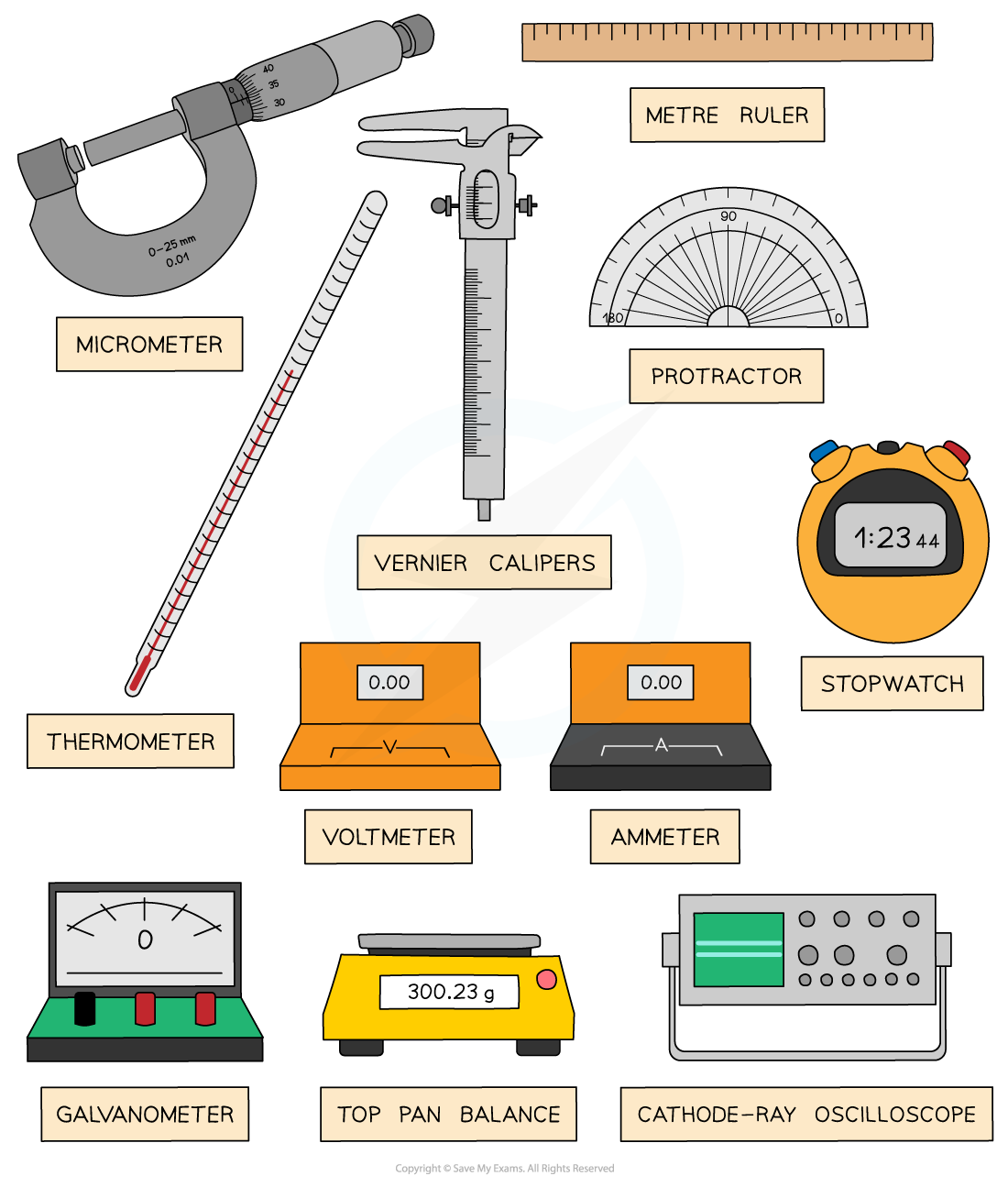Using Practical Equipment & Materials (OCR A Level Physics) : Revision Note
Using Practical Equipment & Materials
Choosing the right equipment and knowing how to use it for a physics experiment is crucial
A list of common apparatus is shown below:


A selection of apparatus commonly used in physics experiments
When using measuring instruments such as those listed above, it is important to be aware of what each division on a scale represents
This is known as the resolution
The resolution is the smallest change in the physical quantity being measured that results in a change in the reading given by the measuring instrument
The smaller the change that can be measured by the instrument, the greater the degree of resolution
For example, a standard mercury thermometer has a resolution of 1°C whereas a typical digital thermometer will have a resolution of 0.1°C
The digital thermometer has a higher resolution than the mercury thermometer
Using Practical Apparatus & Techniques
When planning and implementing a practical investigation, it is crucial to decide which apparatus is the most suitable for the intended purpose
Worked Example
The diagram below shows one possible method for determining the Young modulus of a metal in the form of a wire.

Describe how you can use this apparatus to determine the Young modulus of the metal. The sections below should be helpful when writing your answers.
The measurements to be taken.
The equipment used to take the measurements.
How you would determine Young modulus from your measurements.
Answer:
Step 1: State the necessary measurements to be taken
The diameter of the wire
The initial length of the wire
The extension of the wire (final length – initial length)
The mass of the hanging masses or the weight applied to the wire
Step 2: State and explain which equipment would be the most suitable
For measuring the diameter of the wire:
A micrometer screw gauge or vernier callipers
Micrometer would be best as this has the highest resolution when measuring small areas
For measuring the original length / extension of the wire:
A metre ruler or a tape measure
The wire has a moderate length which cannot be measured using a vernier scale
For measuring extension:
Travelling microscope
These are designed for measuring small changes in length
For measuring the mass:
Scales or a top-pan balance
A top-pan balance would be best as this has the higher resolution
W = mg equation can be used to calculate weight
For measuring the weight directly:
A newton-meter
This is useful if ‘known’ weights are used and to check if the quoted masses are accurate
Step 3: Explain how Young's modulus can be determined from these measurements
Young modulus is equal to the gradient of a stress-strain graph (in the linear region)
Stress is equal to:

Strain is equal to:

Where:
F = weight (N)
A = cross-sectional area of wire (m2)
ΔL = extension (m)
L = original length (m)
Young's modulus for this metal is then calculated using the following equation:


You've read 0 of your 5 free revision notes this week
Unlock more, it's free!
Did this page help you?
